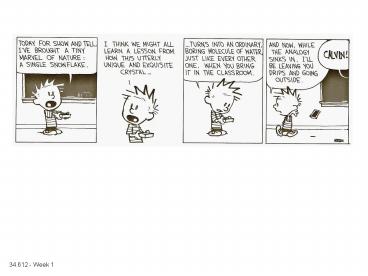Cardiopulmonary PT in red also covered in lab - PowerPoint PPT Presentation
1 / 17
Title:
Cardiopulmonary PT in red also covered in lab
Description:
Aerobic capacity / endurance. Circulation (including perfusion) ... Exercise. Aerobic capacity / cardiovascular training. Strengthening / muscular endurance ... – PowerPoint PPT presentation
Number of Views:64
Avg rating:3.0/5.0
Title: Cardiopulmonary PT in red also covered in lab
1
(No Transcript)
2
- Cardiopulmonary PT (in red also covered in lab)
- Patient History (what information do I need?)
- Systems review guess what systems---
- Tests and measures (collecting information)
- Body structures
- Anthropometrics chest wall
- Posture thoracic
- Movement abnormalities reduce mechanical
efficiency - (Can someone explain mechanical efficiency?)
- Cardiovascular Pulmonary
- Aerobic capacity / endurance
- Circulation (including perfusion)
- Ventilation Respiration
3
- Evaluation / Prognosis (using information)
- Identify prioritize impairments (what's wrong?)
- Determine dysfunction toward which the
intervention will be directed (reversible vs.
irreversible) (systems thinking) - Prognosis Outcomes (using information)
- Determine predicted level of improvement in
function and amount of time needed to reach that
level - Determine prognosis with consideration of
modifying factors - Planning and sequencing patient interventions and
progressing treatment based on outcomes - Determining outcomes
- Collecting outcomes data
- Determining discharge criteria based on patient
goals and patient status - Differentiating between discharge,
discontinuation, transfer of care, or re
evaluation - Modifying tests/measures interventions when
necessary - Recognizing the effectiveness of PT interventions
4
Examine
Evaluate
5
- Interventions (fixing problems)
- Non procedural Interventions
- Coordination of care
- Communication
- Documentation
- Patient/family/client instruction (education)
- Procedural Interventions
- Exercise
- Aerobic capacity / cardiovascular training
- Strengthening / muscular endurance
- Breathing (always helpful)
- Use of gait functional balance other modes
of training as aerobic/cardiovascular/strength/
endurance training - Modification of environment (as if this is easy)
6
- Airway clearance techniques
- Breathing strategies (coughing, huffing, pacing,
PLB) - Manual / mechanical techniques (percussion,
vibration) - Positioning
- Promoting health, wellness and prevention
- Standards of Care
- Recognizing implications of research
(technological developments) on PT practice - Utilizing proper body mechanics
- Positioning, draping stabilizing of patient
7
- To review
- For terminology sake I mean the same by
- Work in the environment, functional activities,
movement, goal directed tasks, doing stuff,
meeting demands - What allows us to engage in work in the
environment? - What allows us to sustain work in the
environment? - What measures are important for considering our
ability to engage in and sustain work in the
environment? - How are these measures related? (anatomically,
physiologically, and causally in an x, y manner)
8
- Major Objective carried forward from
EP/Physiology to this class. - Describe the integrated and coordinated function
of cardiovascular, pulmonary, neuromuscular and
bioenergetic components of acute response and
chronic adaptation to any physical activity
explain the impact of a variety of environmental
stressors and/or biological impairments and
explain how exercise can modify risk as well as
improve functional capacity.
9
- Some slightly more specific objectives that are
helpful - Explain the consumption of oxygen as a downhill
process and the role, as well as relationship,
of the four required systems for energy
production. - Pulmonary function is based on two major systems
of pressure guided movement air to lungs
(ventilation) and gas exchange (external and
internal respiration). Explain how ventilation
supports respiration and how respiration supports
ventilation. - Explain how normal cardiac electrophysiology
contributes to normal hemodynamics and how normal
hemodynamics contributes to normal cardiac
electrophysiology. - Explain what determines the bioenergetic rate of
energy production and whether a required rate is
sustainable or not, how we can measure and/or
estimate this rate and the functional
significance.
10
CNS Modulation of Force
Oxidative Phosp.
Glycolosis
CP
ATP Storage
In a fiber ATP Use ? Temporal ?
Between fibers ATP Use ? Spatial ?
Therefore Force a ATP Use
11
Aerobic Capacity
How long an activity/task can be performed.
If below Anaerobic Threshold
Energy Cost of Activity / Mechanical Efficiency
12
Force
gtgt Aerobic Capacity
1 Minutes
gtAerobic Capacity
20 Minutes
Aerobic Capacity
Time can Sustain
13
Coordinated Focused
Muscular Activity
Work
Environment
Bioenergetic Process
O2
Glucose
H2O
Ventilation
CV System
Respiration
14
- Work load Energy Demand Energy Cost
Absolute Intensity - What determines energy cost?
- How do we measure this absolute intensity?
- How can we estimate this absolute intensity?
- http//www.cdc.gov/nccdphp/dnpa/physical/measuring
/met.htm - What is the primary determinant of energy cost of
walking along a flat surface?
15
(No Transcript)
16
- What factors determine how someone will respond
to a particular activity of a particular energy
cost? - What are the factors about the activity influence
response? - Upper extremity
- Lower extremity
- Position / posture during activity
- What factors about the person influence response?
17
- Odds and ends
- What is the purpose of the examination?
- What is the purpose of the evaluation?
- What might some typical goals for the PT working
with a patient with a cardiac and/or pulmonary
disease be?































